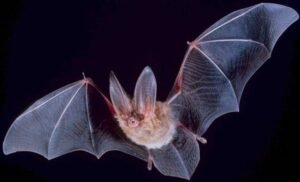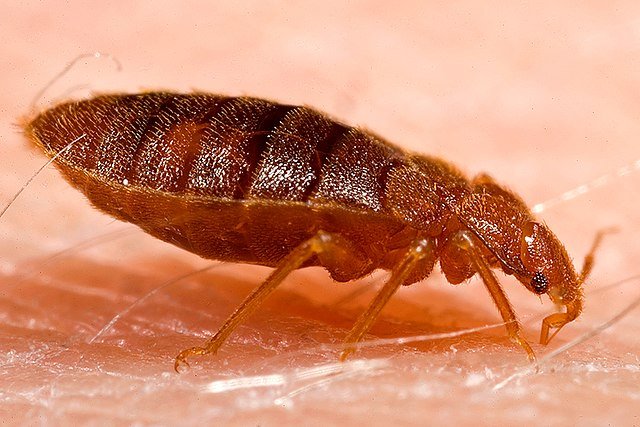How to Get Rid of Bats in My House Without Killing Them?
Are Bats Really Dangerous or Are They Helpful?
 Many people see bats and feel fear. Movies show them as blood suckers or evil animals. In reality, most bats eat insects and help us to control them. A single bat can eat thousands of mosquitoes or moths in one night. This means less bugs around farms and less chemicals needed. In Europe, studies show bats save farmers millions of euros every year because they reduce pest insects. They also help pollinate tropical fruits like banana, mango, cacao. So bats are not only pests, they are also part of nature balance.
Many people see bats and feel fear. Movies show them as blood suckers or evil animals. In reality, most bats eat insects and help us to control them. A single bat can eat thousands of mosquitoes or moths in one night. This means less bugs around farms and less chemicals needed. In Europe, studies show bats save farmers millions of euros every year because they reduce pest insects. They also help pollinate tropical fruits like banana, mango, cacao. So bats are not only pests, they are also part of nature balance.
Why Do People Want Bats Out of the House?
Problems start when bats choose to live in houses, barns, or churches. In old towns in Europe, bats often stay in attics or behind shutters. Issues include:
Smell from urine and guano.
Stains and noise at night.
Health risk from guano dust.
Fear when bats fly inside rooms.
So people want them out, but killing is not the answer.
Can Bats Make Humans Sick?
Yes, there are risks. The most serious is rabies. Rabies from bats is rare, but it is always deadly if not treated. If you find a bat in a bedroom where people slept, you must call health authority before release. In Europe and USA, public health offices give advice and maybe test the bat. Pets must also have rabies vaccination.
Another problem is histoplasmosis, a lung disease from fungus growing in guano. In North America it is common in some regions. In Europe, risk is lower but still possible in large guano deposits. Dust from guano should never be breathed. Always wear mask and gloves when cleaning, or call professional cleaning company.
How Can I Tell If I Have Bats in My House?
Small squeaks or scratching before sunrise or after sunset.
Droppings on windowsills or ground near walls.
Black stains near small cracks in roof or attic.
Watching at dusk, you see bats fly out of the same hole.
Is It Legal to Remove Bats Anytime?
United States: Each state has rules. For example, in Florida you cannot close bat exits between April 16 and August 14, because babies cannot fly yet. Other states have similar maternity season restrictions.
Europe and UK: Laws are very strict. In most EU countries, bats and their roosts are protected. This means you cannot disturb or block a roost without a licence. In the UK, even if bats are not in the roost at the moment, the place is still protected. So before work on roofs, you may need advice from Bat Conservation Trust or government agency.
Australia: Special rules apply. People are not allowed to handle bats because of Australian Bat Lyssavirus (similar to rabies). Only vaccinated carers can touch them.
So the first step is always to check local laws. Killing bats is illegal in many places and can give heavy fines.
What Is the Humane Method Called “Exclusion”?
Exclusion is the only long-term and safe solution. It means you let bats fly out, but you stop them from returning.
Steps:
Watch your house at dusk to find all exit points.
Seal all small cracks and holes, leave the main exit holes open.
On the main exits, install one-way devices: netting, tubes, or cones that allow bats to go out but not in.
Leave devices for 5–10 nights of good weather.
After no more bat activity, close all holes completely with caulk, mesh, or boards.
Never use poison, glue traps, or smoke. These methods are cruel, often illegal, and usually do not work.
Do Repellents or Ultrasonic Devices Work?
Many people try sprays or ultrasonic machines. Science shows these are not reliable. Bats may leave for a short time, but they return. In houses, exclusion is the only method with real success.
How Do I Clean Bat Guano Safely?
Wear gloves, mask (respirator is best), and eye protection.
Spray water on guano before touching, so dust does not go in air.
Collect into plastic bags and close tightly.
Wash area with disinfectant.
For large deposits in attics or churches, always call specialists. In USA, CDC advises professional cleaning because spores can spread disease. In Europe, specialist companies also exist for guano removal.
How Can I Stop Bats From Coming Back After Exclusion?
Seal every crack bigger than 6 mm.
Put metal mesh (¼ inch) on attic vents.
Close chimneys with bat-safe caps.
Repair loose roof tiles.
Use weatherproof materials, because bats return to old houses again and again.
Can I Give Bats Another Place to Live?
Yes. A good idea is to put a bat house. This is a wooden box with chambers where bats can sleep during day. Install it 4–6 meters high, on a wall or pole, not on a tree. Place it where sun shines 6–8 hours per day. In Europe, darker color bat houses work better in north countries, lighter color in south countries. If bats have a safe place outside, they are less likely to come back into attics.
What About Churches and Old Buildings in Europe?
In many European countries, bats use historic buildings like churches and castles. Removing them is sensitive. Special projects exist where conservation groups work with local authorities. In these cases, exclusion must be planned with experts to protect heritage and bats. Sometimes special bat lofts are built inside towers so bats stay but not disturb people.
What Should I Do If a Bat Is Flying in My Room?
Stay calm.
Close doors so bat stays in one room.
Open windows and lights off, let bat find way out.
Do not touch bat. If contact possible, call health authority before release.
FAQ
Do bats attack people?
No. They avoid humans. Only danger is if you try to touch them.
When is the best time to exclude bats?
After maternity season. In most countries this is end of summer or early autumn.
Can I kill bats if they are too many?
No. In Europe, killing bats is illegal. In USA, many states also protect them.
Do mothballs or strong smells keep bats away?
No. These methods do not work long term and can be harmful for people.
Do I always need a professional?
Small houses with one exit you can try exclusion yourself. Big houses, historic buildings, or legal restrictions require professional help.
Quick Checklist for Humane Bat Removal
Confirm bats are inside.
Check local laws and maternity season.
Seal small cracks, leave main exits.
Install one-way devices on exits.
Wait 5–10 nights until bats leave.
Seal last holes completely.
Clean guano safely.
Optionally install bat house outside.
Author
Nasos Iliopoulos
BSc Agronomist & Certified Pest Control Expert
Scientific Director, Advance Services (Athens, Greece)
Licensed Pest Control Business – Ministry of Rural Development & Food (GR)
Disclaimer
This article is for informational purposes only. Pest control laws and approved chemicals vary by country. For best results and legal safety, we strongly recommend contacting a licensed pest control professional in your local area. Always make sure that the pest control technician is properly certified or licensed, depending on your country’s regulations. It’s important to confirm that they only use approved products and apply them exactly as instructed on the product label. In most places in Europe, UK, or USA, following label directions is not just best practice—it’s the law.
References:
National Geographic - Bats

